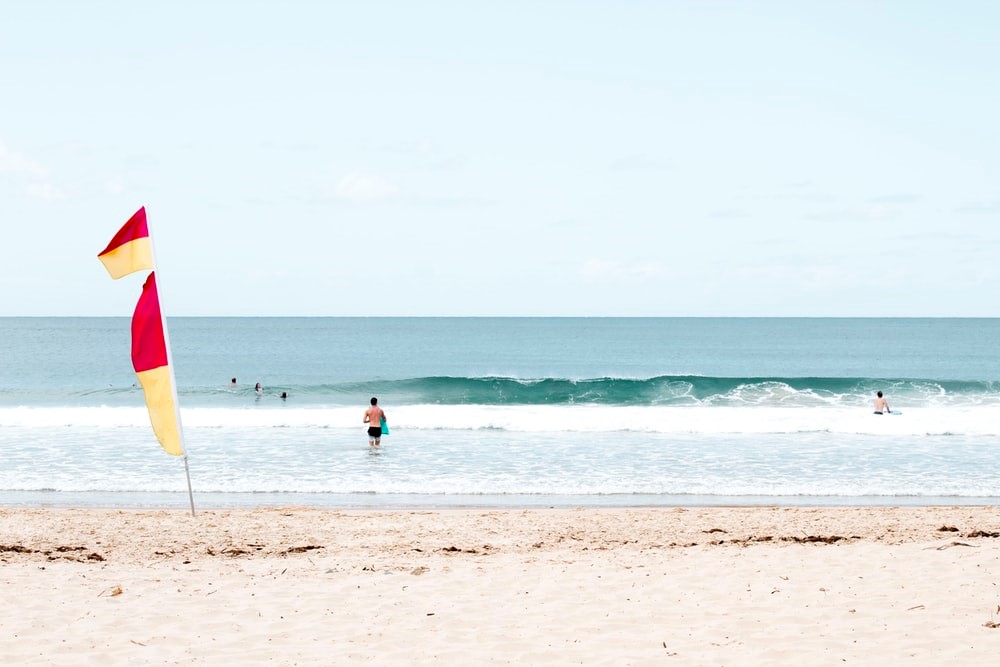
While those who have grown up by the sea will likely find beach safety advice to be like second nature to them, those who are less familiar with a seaside environment may be unsure of what to do on the beach if they find themselves in trouble.
While Cornwall’s beaches are generally safe places, each year there are, unfortunately, a few deaths recorded from beach-related accidents. To help lower this number in future, we are sharing some tips and advice to ensure that all visitors to Cornwall are as safe as can be.
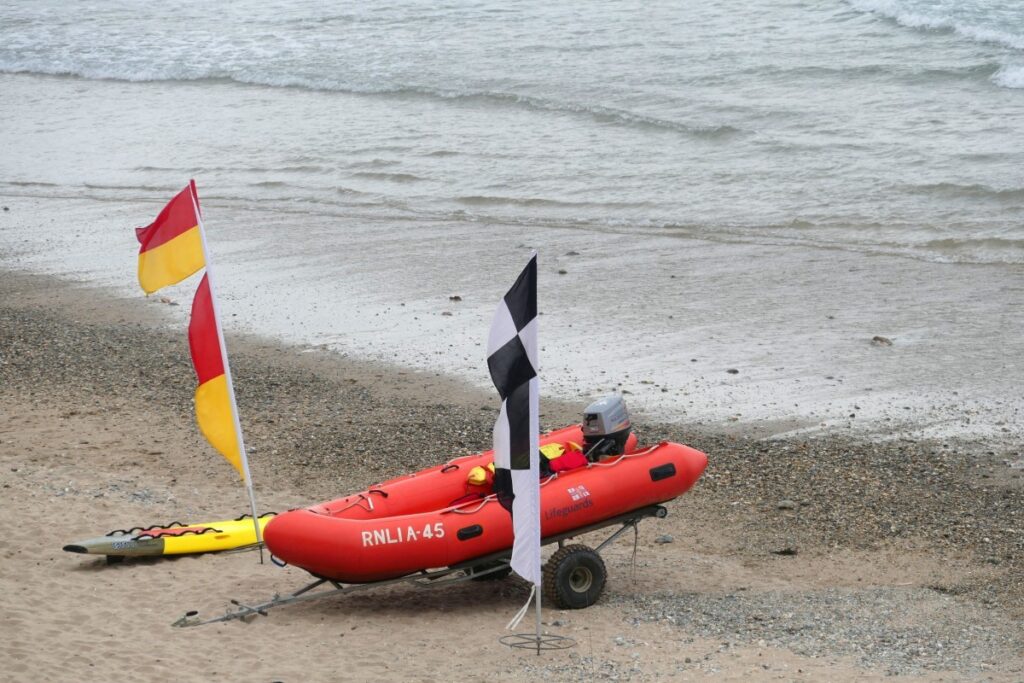
Know Your Flags
Flags are used on several beaches to indicate how safe it is to enter the water. Here we will explain what these flags mean:
Red and Yellow Flag
You may see a flag with a red stripe on top and a yellow stripe underneath. There will be two of these red and yellow flags on the beach, and these mark out the area that it is safe to swim between. This area will be covered by lifeguards.
Black and White Chequered Flag
A black and white flag is used to mark the area as a surfing spot. It can also be used for other watersports, like kayaking or paddleboarding. If you see a black and white flag, it is best to avoid getting into the water if you are just a swimmer.
Red Flag
A block red flag indicates danger, and if you see this flag on the beach, it means you should not enter the water at all.
Orange Windsock
You may also see an orange windsock on a pole at the beach. If this is flying, then it means that there are strong offshore winds, so you should not take an inflatable out into the water with you.
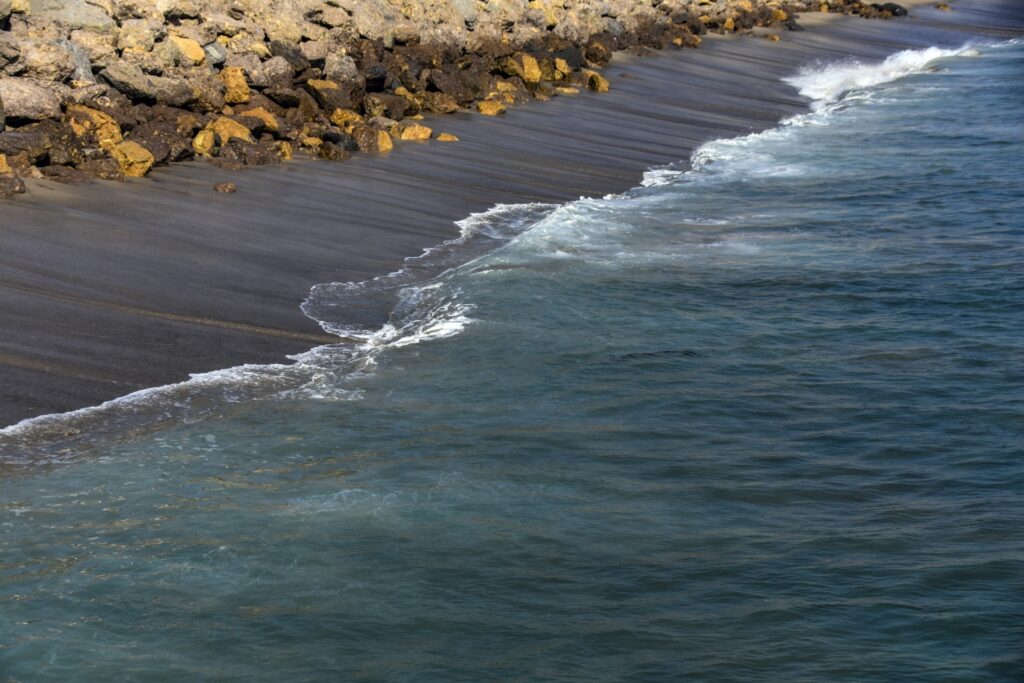
Check Tide Times
Before you head out for a day at the beach, it is imperative to check the tide times for the beach you are visiting.
Tide changes are one of the biggest issues’ visitors face when on Cornish beaches. This is because at low tide there are extra areas of beach to explore, such as coves and caves, that access to will disappear when the tide comes back in. This can leave people cut off and stranded and can be particularly dangerous.
Be Aware of Your Current Surroundings
Before you begin to explore an area of beach, look out for signs of where the tide will come to – you should see on the sand or rocks where debris and seaweed have been deposited. This will give you an idea of where the tide will come to, but you must also check what time the high tide is and which direction the water is currently moving.
Remember that high tide means the time when the sea is at its highest, so you must return to a safe place long before this time, so you don’t risk being cut off.
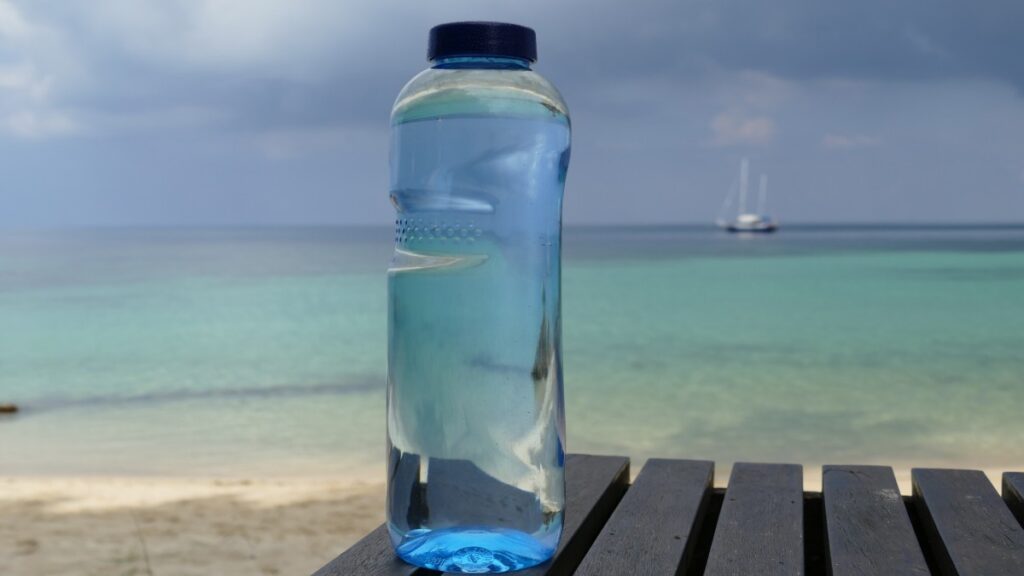
Keep Hydrated
Staying hydrated is crucial on a beach, so be sure to bring along a bottle of water or find a cool drink at a nearby beach café or kiosk. Staying hydrated will help to reduce the risk of heatstroke and is very important on hot days.
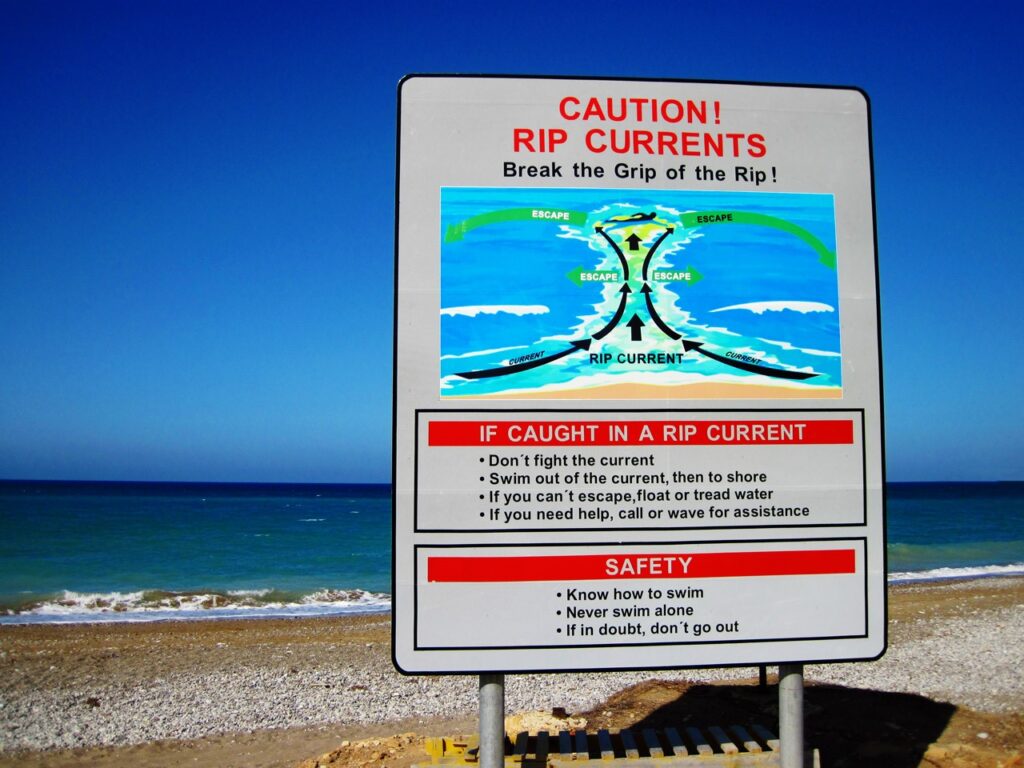
Be Aware of Rip Currents
A rip current is a powerful current of fast-moving water that can drag swimmers out to sea. You’ll feel it if you notice the water pulling you strongly to the right or left as you walk, swim, surf or bodyboard in the water.
If you feel yourself being pulled by a rip current, you should get out of the water as soon as possible. However, this can seem hard to do if you are being dragged out to sea, but the best advice is don’t fight against it. Instead of trying to swim straight back to shore, go parallel to the shore and swim back at an angle.
There shouldn’t be an issue with rip currents if you stick between the yellow and red flags.

Wear Sun Protection
If you’re spending a day at the beach, then it is likely you’ll be under the hot sun for an extended period of time. This puts you at risk of sunburn, which can increase your risk for skin cancer, as well as heatstroke.
Make sure to regularly apply sunscreen throughout the day and wear a hat to keep direct sunlight off your head.
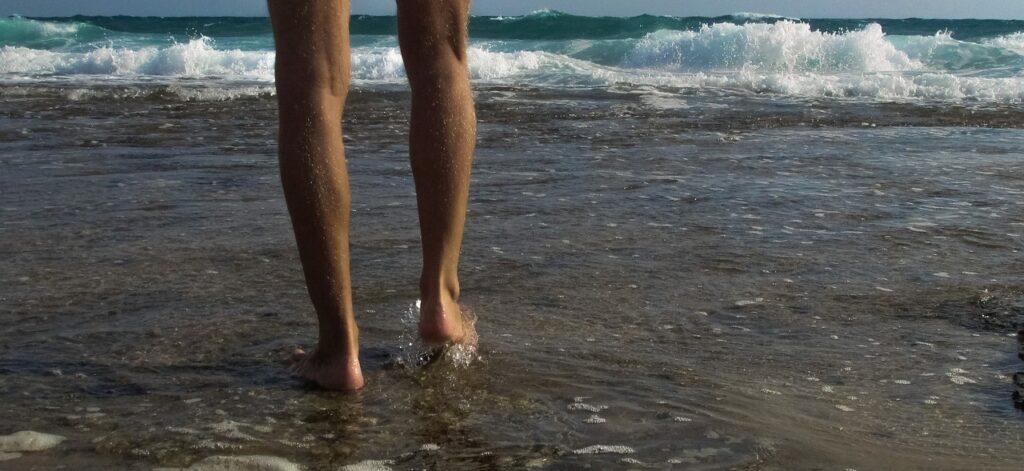
Dealing with Weever Fish Stings
While it’s not the most common beachside threat, you do still need to be aware of the possibility of weever fish stings. Weever fish are small fish that bury themselves in the sand waiting for something to eat, so it is possible for you to accidentally step on them when in the water without spotting them.
However, they have a poisonous sting if you do step on them, so it will quickly become apparent. If this happens, make your way to a lifeguard hut, where they can assist you. Typically, this will involve placing your foot in hot water so that the poison is broken down and removed.
To avoid weever fish stings altogether, wear beach shoes or wetsuit boots when walking in the water.
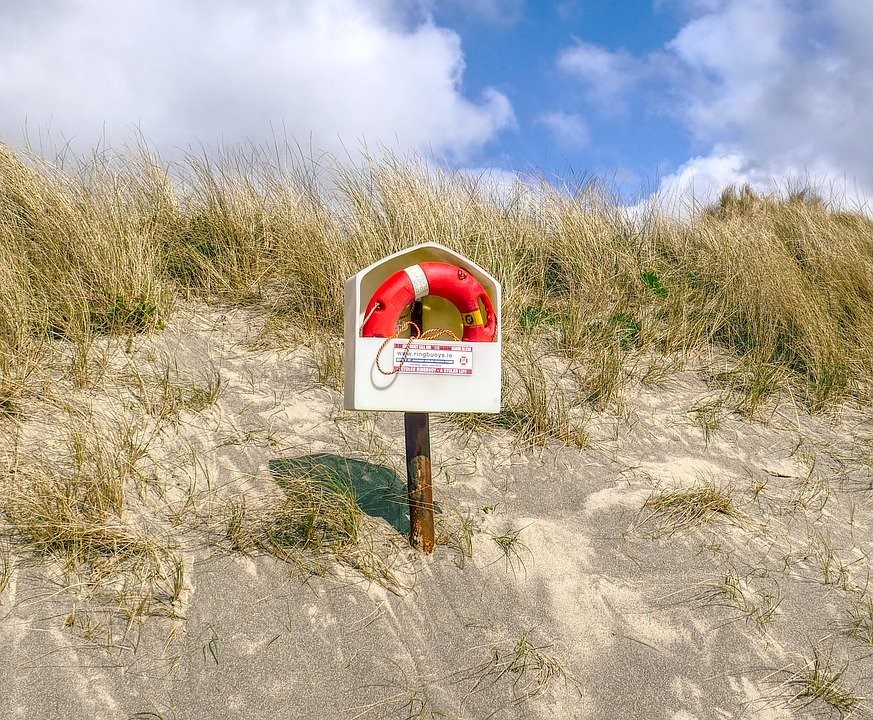
What to Do If You Have a Problem in the Sea?
If you feel in trouble in the water, or start to become panicked, then the best thing to do is to take deep breaths to calm down. Try to lie on your back, as you can float this way, which will reduce the amount of energy you are using and can help to relax you.
If you need to request help from a lifeguard or alert someone on the beach that you need help, simply raise your hand, and keep it still and high, while shouting for help. It is better to keep your arm still rather than wave it, as this could be mistaken for waving to a friend on the beach rather than requesting help.
Cornwall beaches are a wonderful place to be, and you will be sure to have a fun day in the sun if you follow these beach safety tips. Our Truro holiday cottages are a short drive from a huge variety of incredible beaches, from sandy strips and famous surf spots to quiet coves and coastal wonders!